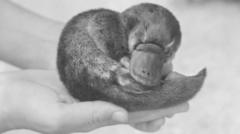The International Union for Conservation of Nature has officially recognized three new giraffe species. This finding will aid in conservation efforts and more effective population management.
New Discoveries: Giraffe Population Expanded to Four Distinct Species

New Discoveries: Giraffe Population Expanded to Four Distinct Species
Scientists identify three additional giraffe species after extensive research into genetic diversity and evolutionary separation.
In a groundbreaking revelation, researchers at the International Union for Conservation of Nature (IUCN) have identified three more species of giraffes than previously acknowledged, bringing the total to four. Traditionally seen as a single species, the findings underscore the genetic diversity and uniqueness of these majestic animals, making way for much-needed conservation strategies.
Utilizing advanced comparative analysis of skull sizes and head shapes, scientists have confirmed enough genetic differences to classify giraffes into four distinct species. Factors such as geographical barriers — including deserts, rivers, and valleys across Africa — have played a crucial role in the evolution of these animals, leading them to develop separately over time.
The newly recognized species includes the Southern giraffe, native to regions in southern Africa including Angola, Namibia, and Botswana. Historical separation likely occurred due to the Kunene and Zambezi rivers, which formed natural barriers against cross-breeding with other giraffes.
Next is the Reticulated giraffe, found in Kenya, Somalia, and Ethiopia. This species is believed to have evolved separately due to the Tana River and mountainous regions which defined its habitat. Interestingly, the Reticulated giraffe has migratory patterns that could have led them to encounter other giraffes in overlapping territories.
The third addition is the Northern giraffe, inhabiting parts of western Ethiopia and Uganda, among other areas. This species has been separated from others by significant geographical features like the Nile River and Lake Victoria, which have contributed to its distinct evolutionary path.
Lastly, the Masai giraffe, known for its striking leaf-patterned hide, thrives in Kenya, Tanzania, and Uganda. Though its unique pattern suggests separation from the Northern giraffe, variability within giraffe populations means that physical appearance alone cannot define species status.
The IUCN emphasizes that recognizing these genetic differences is essential for effective conservation management. According to Michael Brown, co-author of the report, understanding giraffe taxonomy will empower conservationists to better assess the status of each species and tailor strategies for their preservation.
Previously classified as a single species at risk of extinction, the division into four distinct species allows the IUCN to take a fresh look at their vulnerabilities and develop approaches aimed at enhancing the protection of these iconic creatures. As some sub-species are showing population growth, these findings might contribute positively to the ongoing efforts for giraffe conservation worldwide.




















